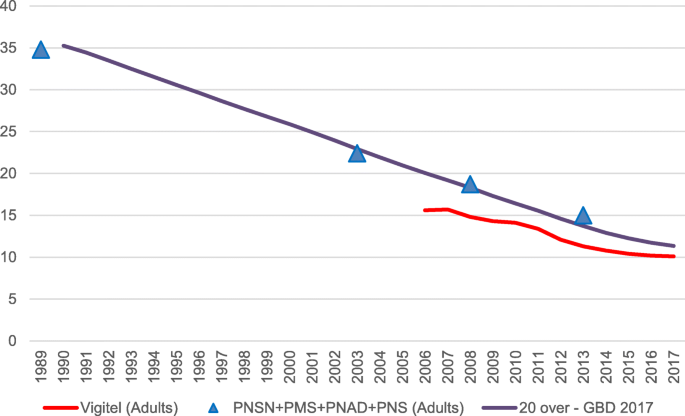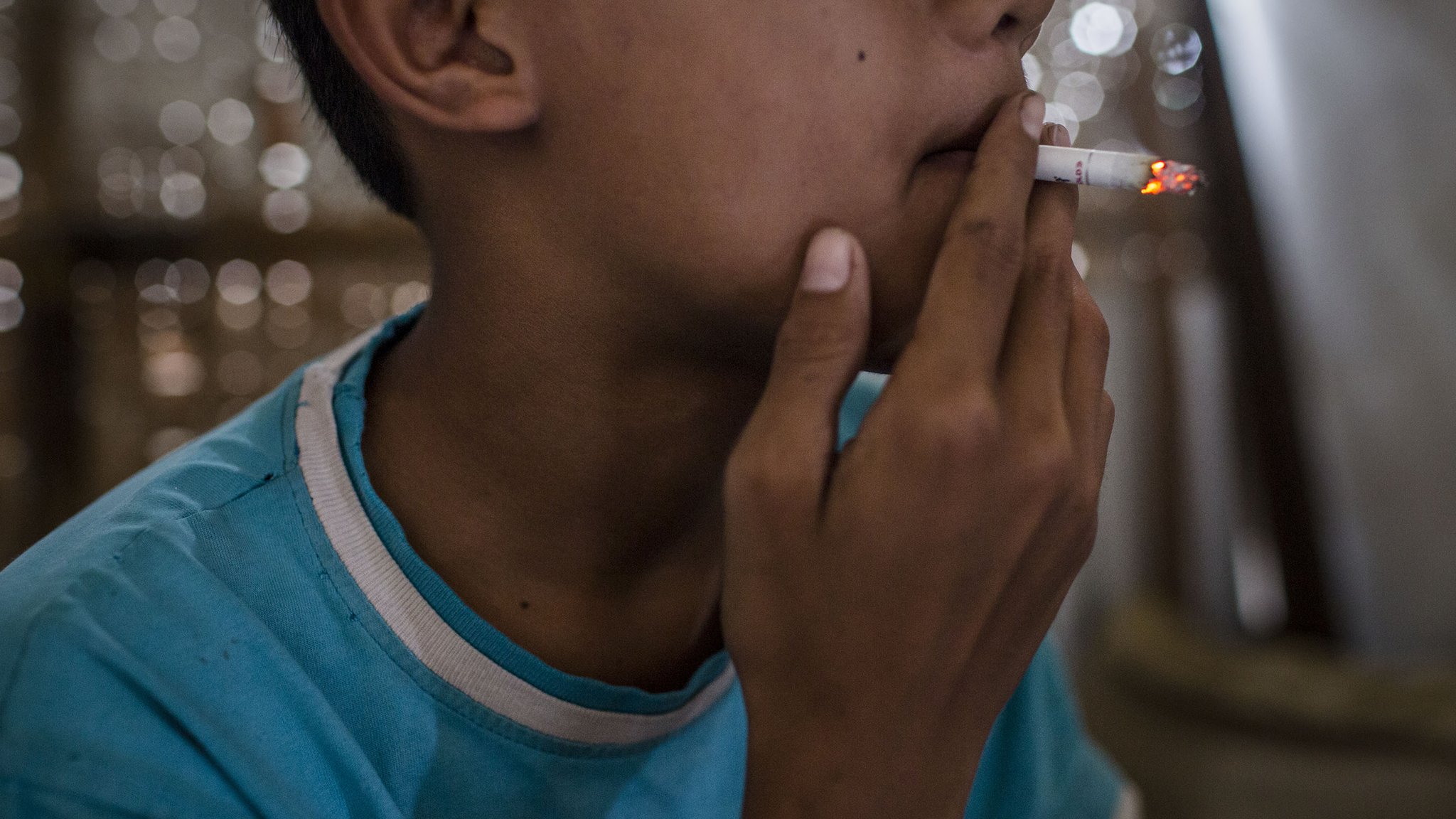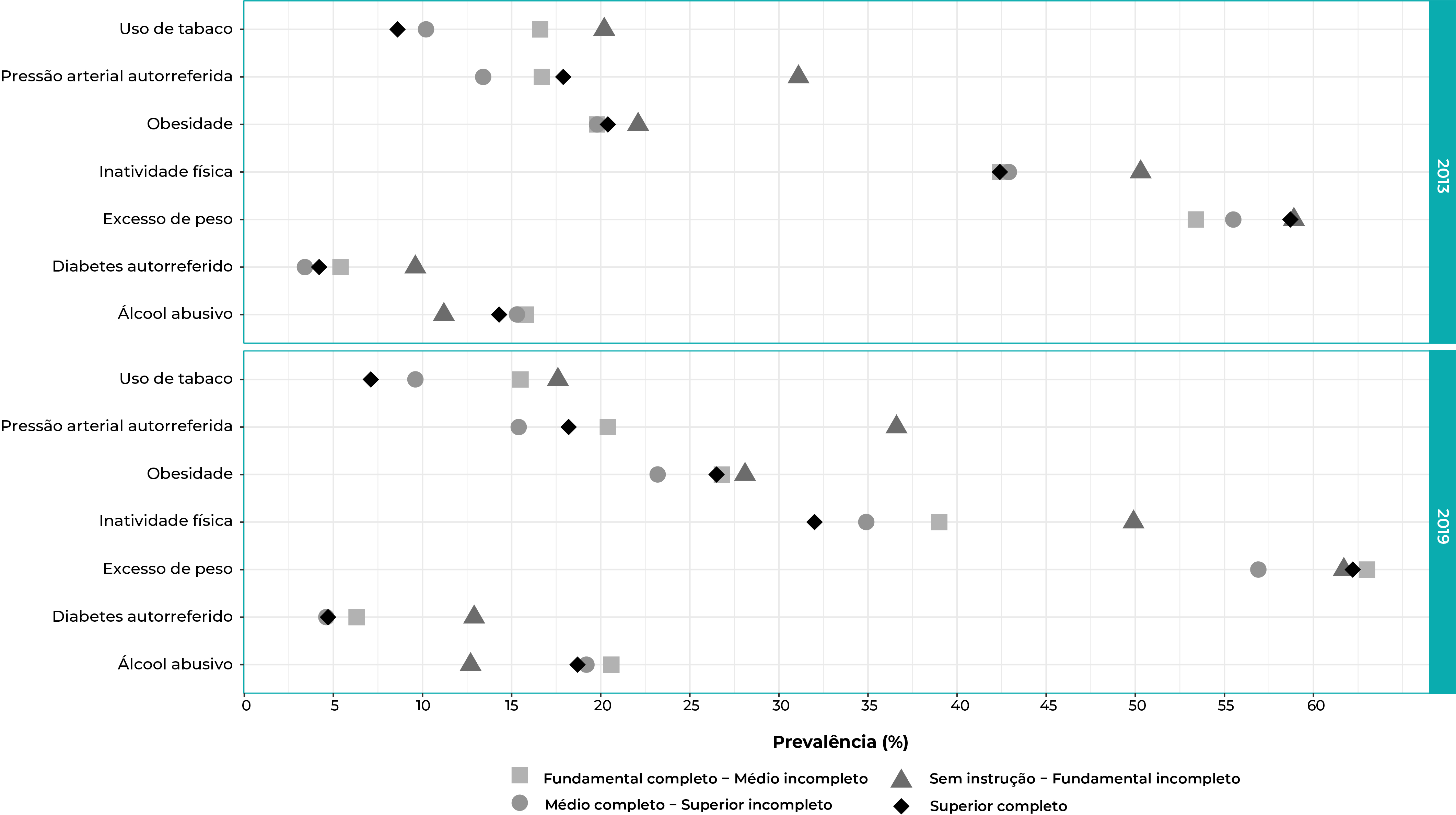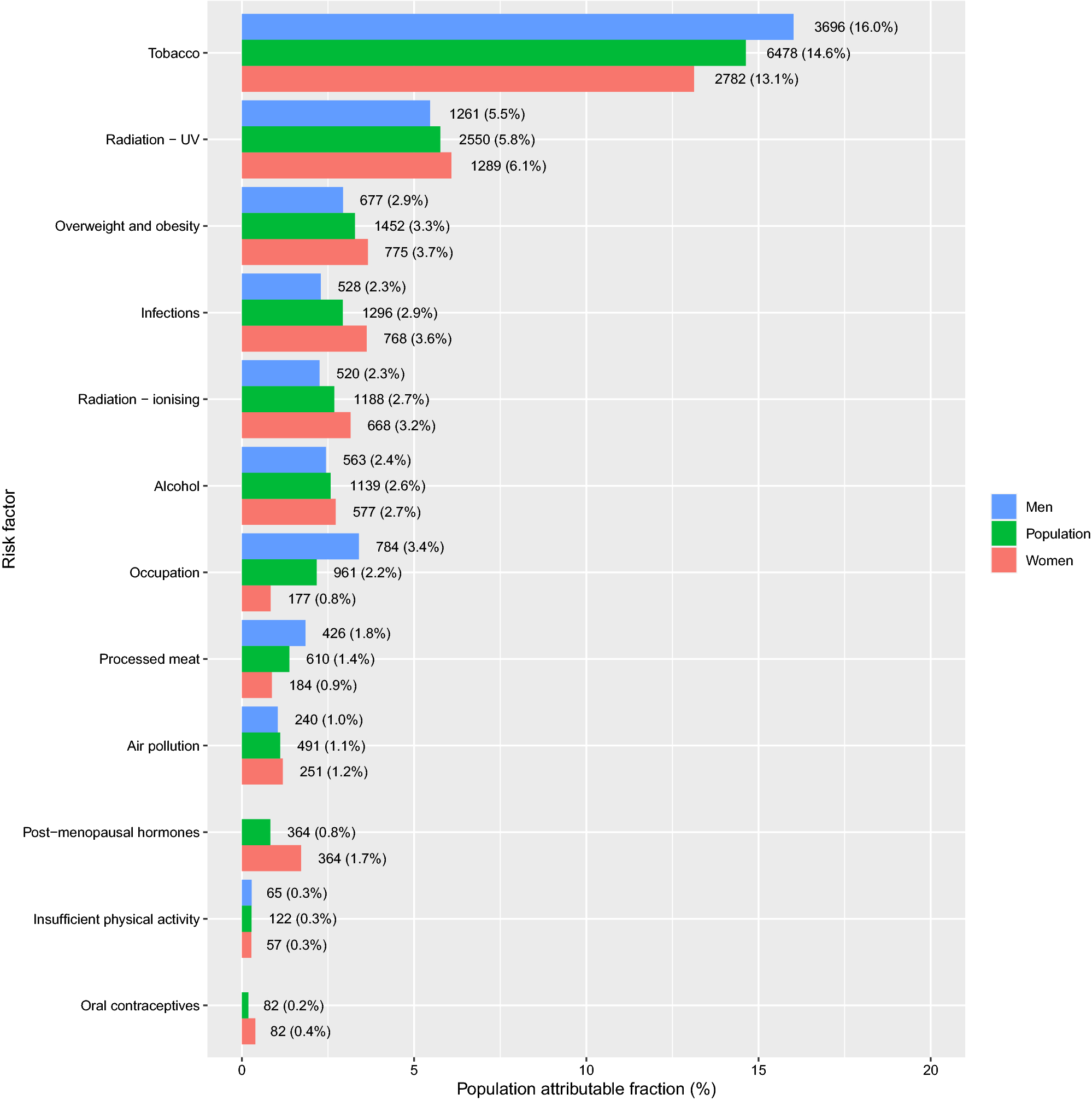Trends in prevalence and mortality burden attributable to smoking
$ 7.50 · 4.8 (480) · In stock

Background The present study sought to analyze smoking prevalence and smoking-attributable mortality estimates produced by the 2017 Global Burden of Disease Study for Brazil, 26 states, and the Federal District. Methods Prevalence of current smokers from 1990 to 2017 by sex and age was estimated using spatiotemporal Gaussian process regression. Population-attributable fractions were calculated for different risk-outcome pairs to generate estimates of smoking-attributable mortality. A cohort analysis of smoking prevalence by birth-year cohort was performed to better understand temporal age patterns in smoking. Smoking-attributable mortality rates were described and analyzed by development at state levels, using the Socio-Demographic Index (SDI). Finally, a decomposition analysis was conducted to evaluate the contribution of different factors to the changes in the number of deaths attributable to smoking between 1990 and 2017. Results Between 1990 and 2017, prevalence of smoking in the population (≥ 20 years old) decreased from 35.3 to 11.3% in Brazil. This downward trend was seen for both sexes and in all states, with a marked reduction in exposure to this risk factor in younger cohorts. Smoking-attributable mortality rates decreased by 57.8% (95% UI − 61.2, − 54.1) between 1990 and 2017. Overall, larger reductions were observed in states with higher SDI (Pearson correlation 0.637; p < 0.01). In Brazil, smoking remains responsible for a considerable amount of deaths, especially due to cardiovascular diseases and neoplasms. Conclusions Brazil has adopted a set of regulatory measures and implemented anti-tobacco policies that, along with improvements in socioeconomic conditions, have contributed to the results presented in the present study. Other regulatory measures need to be implemented to boost a reduction in smoking in order to reach the goals established in the scope of the 2030 United Nations Agenda for Sustainable Development.
Smoking-Attributable Morbidity, Mortality, and Economic Costs - The Health Consequences of Smoking—50 Years of Progress - NCBI Bookshelf
The Mexico SimSmoke tobacco control policy model: Development of a

SciELO - Brasil - Mortalidade e carga do câncer de laringe

Smoking causes one in 10 deaths worldwide, study shows - BBC News

IJERPH, Free Full-Text

Global burden of 369 diseases and injuries in 204 countries and territories, 1990–2019: a systematic analysis for the Global Burden of Disease Study 2019 - ScienceDirect

SciELO - Saúde Pública - Monitoramento das metas dos planos de

Temporal trends of the lung cancer mortality attributable to smoking from 1990 to 2017: A global, regional and national analysis - ScienceDirect

PDF] Smoking prevalence and attributable disease burden in 195

Trends in prevalence and mortality burden attributable to smoking

Updated fraction of cancer attributable to lifestyle and environmental factors in Denmark in 2018